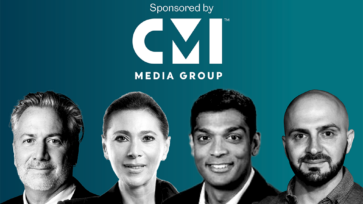Just a few hours before a heavy blizzard almost brought last month’s ePharma Summit to its knees, a man called Dave deBronkart, aka e-Patient Dave, had brought it to its feet. I make no apologies if you already know his story; it’s important and it’s hardly boring.
Only three years ago, Dave was diagnosed with stage IV kidney cancer. The odds were stacked against him. “It was so advanced, it was growing out of my tongue,” he told delegates. But once he’d gotten over the shock, he sprung into action and “Googled like crazy,” hunting down every source of information he could get his hands on. (For the record, the “e” in e-Patient stands for equipped, enabled, empowered and engaged.)
Dave’s physician had initially directed him to ACOR.org, a nonprofit social network for cancer sufferers. This is where he discovered something remarkable: that the patient community provides the best source of accurate information about treatments. In fact they guided him through treatment options, advised him to visit a specialist hospital and steered him toward Novartis, and specifically its cancer drug Proluekin.
But how is it possible that the most accurate and useful information was provided by consumers? A few days after Dave had evangelized the summit, he explained what this means in an interview with MM&M: “The Novartis site had dry, clinical statements: It’s like saying, ‘If you go to a certain neighborhood in Rome, there’s a risk of pick pockets.’ But when you talk to six people who have been to Rome, you find out what you really need to know.”
Of course, this is not to be disrespectful to Novartis or any other pharma company. It’s just a legal thing. “Pharma sites have to publish verifiable, generic information that’s not germane to any individual,” notes Dave. “There’s so much value in a patient community that pharma cannot legally deliver…immensely powerful currents of knowledge and information. To try to stop this would be like holding back the tide. If medical marketers are blind to it, they’re at a major disadvantage. But if they know where it’s happening, they can be a part of that force.”
But how can the pharma industry become part of that force if it is unable, legally, to provide the type of detailed, experience-based information that patients are offering? The answer, according to Dave? Tools, tools and more tools (online ones, naturally).
Dave had delighted the audience in Philadephia when he showed them a slide depicting a patient “tool” that he had developed himself. And when I say tool, I mean an Excel spreadsheet that he had painstaking transformed using formulae, lines and color into a data analysis worksheet that ever-so-slightly-clunkily, but accurately, charted his progress in the battle against cancer. There was nothing else available, he shrugged, both resigned and victorious all at once.
And so, just like that, the one who was desperately searching for knowledge about his disease, about treatment options, about what pharma’s products might be able do for him—about anything that could possibly keep him alive—had become the industry’s teacher; the poster child for patient empowerment. “This is a new dance,” declares Dave. “There’s knowledge on both sides now, so each needs to learn new steps.” Marketers would do well to follow Dave’s lead.
One last thing: Did Dave beat the odds against his disease? You bet he did. By a golden mile.
From the March 01, 2010 Issue of MM+M - Medical Marketing and Media







